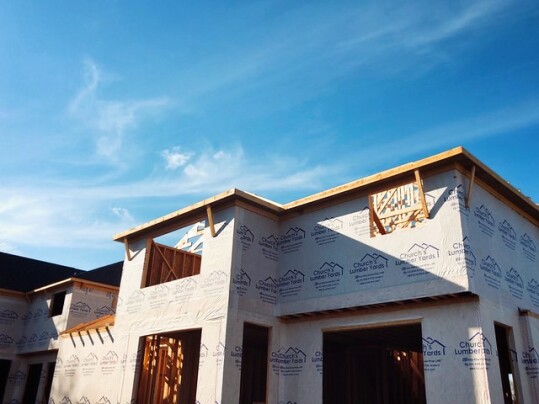According to the Mortgage Bankers Association’s Weekly Application Survey, average mortgage rates fell last week. Rates were down from one week earlier across all loan categories, including 30-year fixed-rate loans with both conforming and jumbo balances, loans backed by the Federal Housing Administration, and 15-year fixed-rate loans. But despite the decline, demand for mortgage applications also fell, with both refinance and purchase activity slowing from the week before. Joel Kan, MBA’s associate vice president of economic and industry forecasting, says affordability conditions may be to blame. “Prospective home buyers have been put off by the higher rates and worsening affordability conditions,” Kan said. “Furthermore, general uncertainty about the near-term economic outlook, as well as recent stock market volatility, may be causing some households to delay their home search.” The drop in mortgage applications was the first in three weeks. Conducted since 1990, the MBA’s weekly survey covers 75 percent of all retail residential mortgage applications. (source)
Archive for May 2022
Average Mortgage Rates Fall From Previous Week
Home Builders React To Growing Challenges
Home builders are a reliable barometer of housing market health, since their business depends on being able to anticipate buyers’ needs. That’s why the National Association of Home Builders’ monthly Housing Market Index – which measures builder confidence – is a closely watched industry metric. The index is scored on a scale where any number above 50 indicates more builders view conditions as good than poor. In May, the index fell for the fifth straight month, dropping to 69. Though still a positive result, it’s an indication that builders are starting to feel the effects of numerous challenges facing the market, including higher mortgage rates. “The housing market is facing growing challenges,” Robert Dietz, NAHB’s chief economist, said. “Building material costs are up 19 percent from a year ago, in less than three months mortgage rates have surged to a 12-year high and based on current affordability conditions, less than 50 percent of new and existing home sales are affordable for a typical family.” But while the market has become more challenging, all three index components remain in positive territory, including the gauge of current sales conditions which scored a 78 in May. (source)
Mortgage Credit Tightens For Gov’t Loans
The standards lenders use to determine whether or not a borrower is approved for a loan aren’t fixed. That means there are times when it’s easier to get a mortgage and times when it’s more difficult. Because of this, the Mortgage Bankers Association tracks mortgage credit availability from month to month. An increase in the MBA’s index indicates that standards are loosening, while a decline means they’ve tightened. According to the most recent results, mortgage credit availability tightened in April. Joel Kan, MBA’s associate vice president of economic and industry forecasting, says the decline was mostly due to changes in refinance activity. “With the rate/term refinance business drying up, lenders have reduced the availability of government streamline refinancing programs, which are no longer as relevant of an option for many borrowers,” Kan said. This led to a 6.5 percent decline in the component measuring credit availability for government loans. Components measuring conventional loans, on the other hand, rose slightly from the month before. (source)
Affordability Improves Due To Income Gains
Whether or not buying a home is considered affordable depends on a number of factors. Home prices, mortgage rates, and income all play a role. That’s why, despite mortgage rate increases during the first quarter of the year, the share of homes considered affordable actually rose from the previous quarter. How’s that possible? Well, a closer look at the numbers shows it’s mostly due to Americans making more money. According to the National Association of Home Builders’ Housing Opportunity Index, 56.9 percent of new and existing homes sold between January and the end of March were considered affordable to families earning the U.S. median income of $90,000. That’s about $10,000 more than Americans were making one year earlier. Naturally, that made buying a home a little easier. But Jerry Konter, NAHB’s chairman, cautions that, with costs continuing to rise, affordability gains aren’t likely to continue. “The first quarter reading is a backward gauge, as surging interest rates, ongoing building material supply chain constraints and labor shortages continue to raise construction costs and put upward pressure on home prices,” Konter said. (source)
Share Of Equity Rich Homes Continues To Climb
One of the primary benefits of owning a home is equity. Put simply, equity is the difference between what you owe on your mortgage and what your home is worth. Which means, you build it as you pay down your loan each month. It also grows when your home’s value increases. It’s homeownership’s main financial benefit and, these days, homeowners have more of it than ever. In fact, according to ATTOM Data Solutions’ most recent U.S. Home Equity & Underwater Report, nearly half of all mortgaged residential properties are now considered equity rich – meaning the combined amount of loan balances secured by those properties is no more than 50 percent of their value. Rick Sharga, ATTOM’s executive vice president of market intelligence, says equity is at record levels. “Homeowners continue to benefit from rising home prices,” Sharga says. “Record levels of home equity provide financial security for millions of families, and minimize the chance of another housing market crash like the one we saw in 2008.” The share of mortgaged homes considered equity rich was at 44.9 percent in the first quarter of 2022, that’s up from 31.9 percent one year earlier. (source)
Buyers Push Mortgage Applications Higher
According to the Mortgage Bankers Association’s Weekly Applications Survey, average mortgage rates increased again last week, with rates up from one week earlier for 30-year fixed-rate loans with both conforming and jumbo balances, loans backed by the Federal Housing Administration, and 15-year fixed-rate loans. Despite the increase, though, home buyers remained active. In fact, demand for loans to buy homes was up 5 percent from the week before. Joel Kan, MBA’s associate vice president of economic and industry forecasting, says it looks like spring buyers aren’t deterred by higher rates. “Despite a slow start to this year’s spring home buying season, prospective buyers are showing some resiliency to higher rates,” Kan said. “Purchase activity has now increased for two straight weeks.” Demand for home purchase loans is now 8 percent below where it was last year at the same time. The MBA’s weekly survey has been conducted since 1990 and covers 75 percent of all retail residential mortgage applications. (source)
Are Active Listings Ready To Rebound?
The lack of available homes for sale has been an issue for years now. It’s pushed prices higher and led to a fast-moving market, where attractive listings only last a few days before they’ve collected multiple offers from competing buyers. Put simply, it’s been challenging for home shoppers. But a new analysis from the National Association of Realtors’ consumer website offers some encouragement for buyers who may need the good news. The website’s most recent monthly Housing Trends Report found that the number of active listings in April posted the smallest year-over-year decline since December 2019. Of course, that means inventory is still down from one year ago. But the 12.2 percent drop from last April is a big improvement over the month before, when the decline was nearly 19 percent. Danielle Hale, chief economist for the website, says the trend is positive. “April data suggests a positive turn of events is on the horizon for weary buyers: If the trends we’re seeing now hold true, we could potentially see year-over-year inventory growth within the next few weeks,” Hale said. That’s great news for prospective buyers, as it would mean more choices, less competition, and slower price increases. (source)







